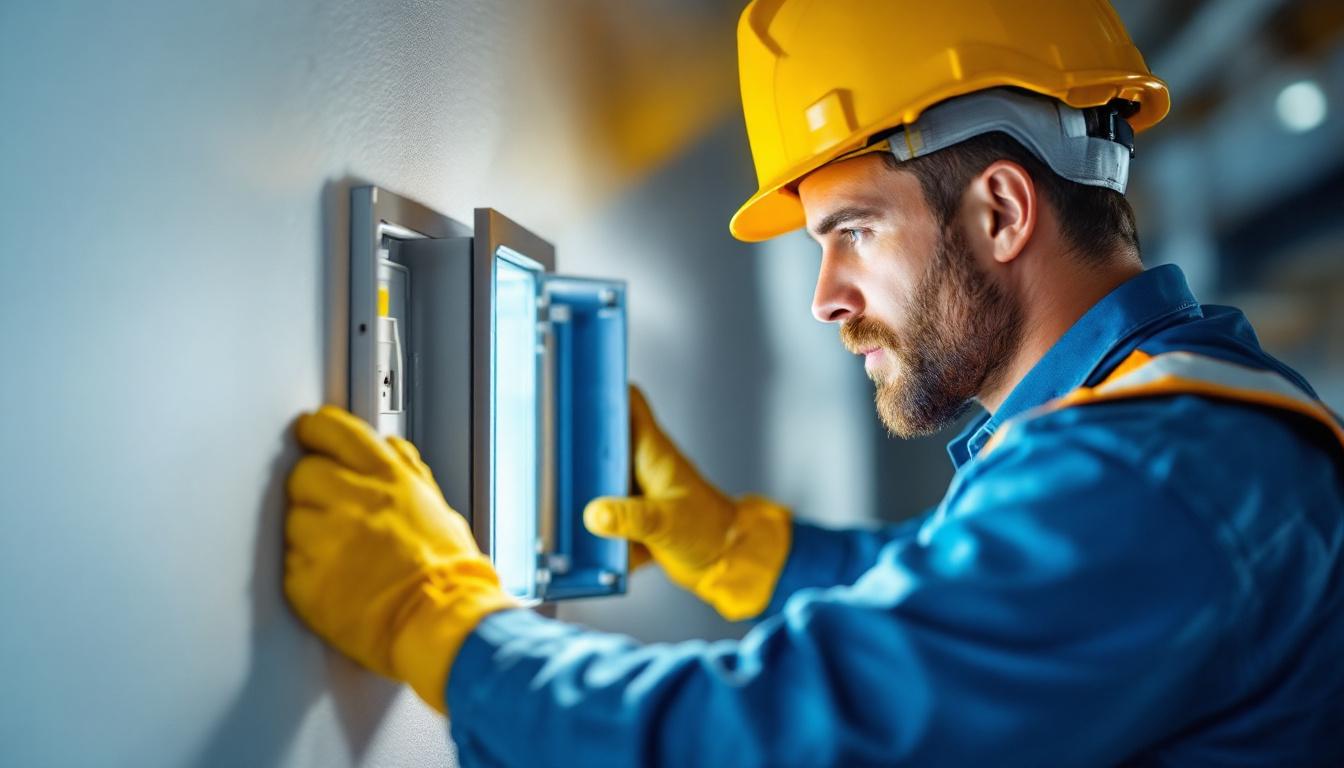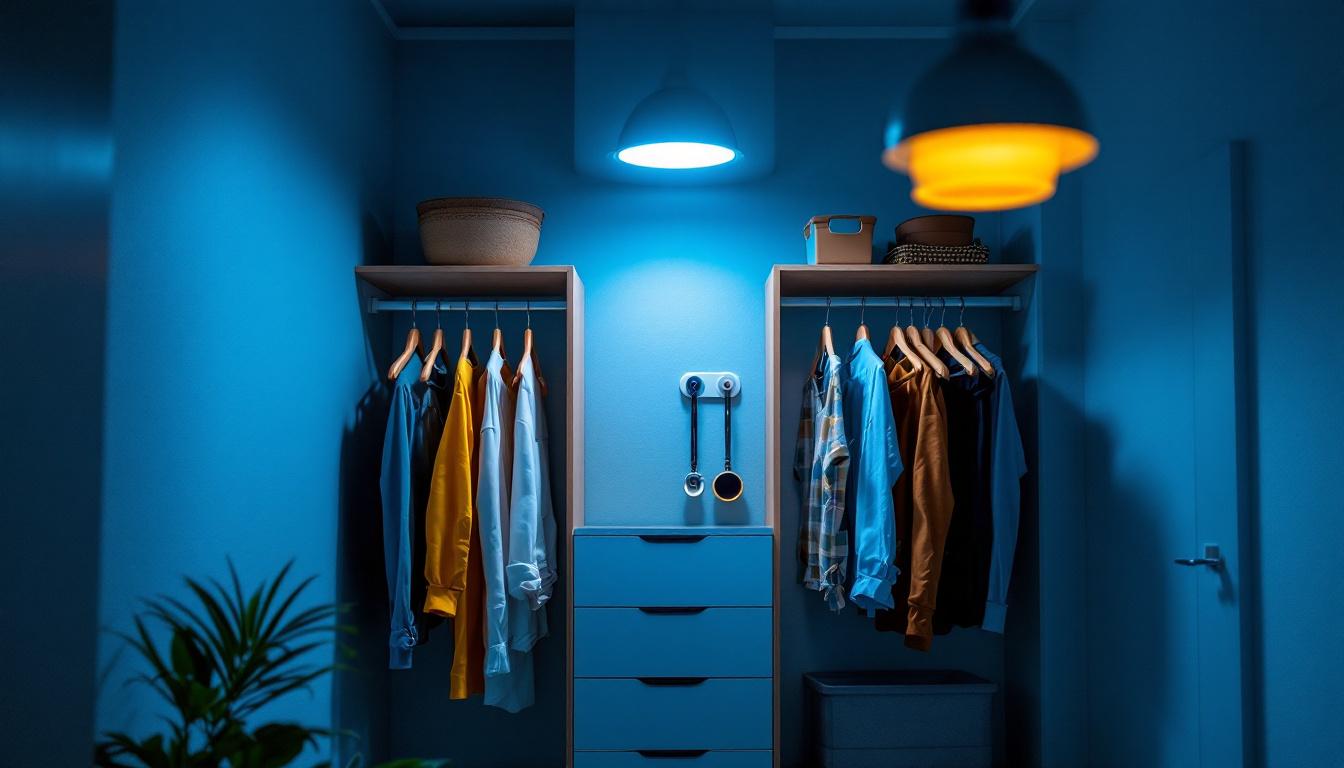
In the realm of electrical installations, the junction box serves as a critical component, ensuring safety and functionality in lighting systems. The junction box cover, often overlooked, plays an equally vital role in protecting electrical connections from environmental factors and accidental contact. For lighting contractors, understanding the significance of these covers can lead to enhanced efficiency and safety on the job.
As the demand for innovative lighting solutions continues to grow, so does the need for reliable and effective junction box covers. This article delves into how these covers are transforming the way lighting contractors approach their projects, offering insights into their benefits, types, and installation considerations.
Junction box covers come in various materials, including plastic, metal, and fiberglass, each offering unique advantages depending on the application. For instance, plastic covers are lightweight and resistant to corrosion, making them ideal for indoor use where moisture is not a concern. On the other hand, metal covers provide superior durability and are often used in outdoor settings where they can withstand harsher environmental conditions. Additionally, fiberglass covers are increasingly popular for their resistance to extreme temperatures and chemicals, making them suitable for industrial applications. Understanding these material properties is essential for contractors to select the appropriate cover for each specific installation, ensuring longevity and safety.
Moreover, the design of junction box covers has evolved to incorporate features that enhance both functionality and aesthetics. Many modern covers are designed with quick-access features, allowing for easier maintenance and troubleshooting without the need for extensive disassembly. Some even come with integrated gaskets that provide a watertight seal, further protecting electrical connections from moisture and dust. As lighting technology advances, these covers are also being designed to accommodate smart lighting systems, with provisions for wiring and connectivity that support the latest innovations in energy efficiency and automation. This adaptability not only simplifies the installation process but also aligns with the growing trend of smart homes and buildings, making junction box covers an integral part of contemporary electrical design.
Safety is paramount in electrical work, and junction box covers are designed to provide a crucial layer of protection. They prevent accidental contact with live wires, reducing the risk of electrical shocks and short circuits. By enclosing the connections, these covers also protect against dust, moisture, and other environmental factors that could compromise the integrity of the electrical system.
For lighting contractors, ensuring the safety of both their team and the end-users is a top priority. Using high-quality junction box covers can significantly mitigate risks, allowing contractors to focus on delivering exceptional lighting solutions without the constant worry of potential hazards. Furthermore, junction box covers can be made from various materials, such as plastic, metal, or fiberglass, each offering different levels of durability and resistance to environmental conditions. Selecting the right material for a specific project can enhance the longevity of the electrical installations, ensuring that they remain safe and functional for years to come.
Electrical codes and regulations dictate specific requirements for junction boxes and their covers. Compliance is not just a legal obligation; it also ensures that installations are safe and reliable. Lighting contractors must stay informed about these codes to avoid costly fines and rework.
Using appropriate junction box covers that meet code requirements can streamline the inspection process, making it easier for contractors to gain approval for their work. This not only saves time but also enhances the contractor’s reputation for professionalism and adherence to industry standards. Additionally, understanding the nuances of local and national electrical codes can empower contractors to make informed decisions about their installations. By investing time in education and training regarding these regulations, contractors can also identify opportunities for innovation and improvement in their practices, ultimately leading to more efficient and compliant electrical systems.
Junction box covers come in various materials, each offering distinct advantages. Common materials include plastic, metal, and fiberglass. Plastic covers are lightweight and resistant to corrosion, making them ideal for indoor applications. Metal covers, on the other hand, provide superior durability and are often used in outdoor or industrial settings.
Fiberglass covers offer a unique blend of strength and resistance to environmental factors, making them suitable for harsh conditions. Understanding the different material options allows lighting contractors to select the best cover for their specific project needs, ensuring longevity and reliability.
Modern junction box covers are designed with functionality in mind. Features such as weatherproofing, tamper-resistance, and easy access points enhance their usability. Weatherproof covers are essential for outdoor lighting installations, protecting connections from rain, snow, and extreme temperatures.
Additionally, some covers come with built-in gaskets or seals that further enhance their protective capabilities. For contractors, selecting covers with these advanced features can lead to fewer callbacks and a more efficient installation process.
Proper installation of junction box covers is crucial for ensuring their effectiveness. Lighting contractors should follow best practices, such as ensuring the box is securely mounted and that the cover fits snugly without gaps. This prevents moisture and debris from entering the junction box, which could lead to electrical failures.
Additionally, contractors should always verify that the electrical connections inside the junction box are secure and properly insulated before installing the cover. This attention to detail can significantly reduce the likelihood of issues arising in the future.
Having the right tools for installing junction box covers can streamline the process and improve overall efficiency. Basic tools such as screwdrivers, pliers, and wire strippers are essential, but specialized tools like torque wrenches may also be necessary for certain applications.
Investing in high-quality tools not only enhances the installation process but also reflects a contractor’s commitment to quality workmanship. By equipping themselves with the right tools, lighting contractors can ensure that their installations are both safe and efficient.
Upgrading to high-quality junction box covers can significantly enhance the durability of electrical installations. Covers made from robust materials are less likely to crack or warp over time, providing long-lasting protection for electrical connections.
For lighting contractors, this translates to fewer maintenance issues and a reduced likelihood of needing to replace covers frequently. Investing in durable covers can ultimately lead to cost savings and improved client satisfaction.
In addition to functionality, the aesthetics of electrical installations should not be overlooked. Junction box covers come in various designs and finishes, allowing contractors to select options that complement the overall look of the lighting system.
By choosing visually appealing covers, lighting contractors can enhance the overall presentation of their work, which is especially important in residential and commercial projects where aesthetics play a significant role in client satisfaction.
In residential settings, the use of high-quality junction box covers has proven to be a game-changer for lighting contractors. One notable case involved the installation of recessed lighting in a newly constructed home. The contractor opted for weatherproof covers to ensure that the connections remained safe and secure, even in areas prone to humidity.
The result was a seamless installation that not only met safety standards but also provided the homeowner with peace of mind. The contractor received positive feedback for their attention to detail, leading to referrals and repeat business.
In commercial environments, the stakes are often higher, and the need for reliable electrical installations is critical. A lighting contractor tasked with upgrading the lighting in a corporate office building faced challenges with existing junction box covers that were outdated and ineffective.
By replacing these covers with modern, durable options, the contractor was able to enhance the safety and efficiency of the lighting system. The upgraded covers not only met compliance standards but also contributed to the overall aesthetic of the office space, impressing both the client and employees.
As the electrical industry evolves, the integration of smart technology into junction box covers is becoming increasingly prevalent. Smart covers equipped with sensors can monitor environmental conditions, alerting contractors to potential issues before they escalate.
This proactive approach can significantly enhance the reliability of electrical systems, allowing contractors to address problems before they impact the overall performance of the lighting installation. Embracing these innovations can set contractors apart in a competitive market.
With a growing emphasis on sustainability, the materials used in junction box covers are also evolving. Manufacturers are exploring eco-friendly options that reduce environmental impact without compromising performance. Lighting contractors who prioritize sustainable products can appeal to environmentally conscious clients and contribute to a greener future.
By staying informed about sustainable practices and materials, contractors can position themselves as leaders in the industry, attracting clients who value eco-friendly solutions.
The electrical junction box cover may seem like a small component in the grand scheme of lighting installations, but its impact is significant. For lighting contractors, understanding the importance of these covers, the various types available, and best practices for installation can lead to improved safety, compliance, and client satisfaction.
As the industry continues to evolve, embracing innovations and trends in junction box covers will be essential for staying competitive. By prioritizing quality, durability, and aesthetics, lighting contractors can transform their approach to electrical installations, ultimately enhancing their reputation and success in the field.
Ready to take your lighting installations to the next level? At LumenWholesale, we provide lighting contractors with the highest quality, spec-grade electrical junction box covers and lighting products at unbeatable wholesale prices. Say goodbye to local distributor markups and hello to superior products that meet the highest industry standards. With our hassle-free bulk buying and free shipping, you can stock up on reliable, high-performance lighting solutions that will set your projects apart. Elevate your electrical installations with the perfect blend of quality, affordability, and convenience. Discover the best value in lighting today by visiting Wholesale Lighting at the Best Value.

Explore the key differences between T8 and T12 bulbs in this insightful article tailored for lighting contractors.

Discover the essential guide to solar wall sconces tailored for lighting contractors.

Discover the crucial role lighting plays in small closets and why it’s essential for lighting contractors to master this niche.

Discover expert insights from top lighting contractors on the benefits and applications of 4 ft shop lights.